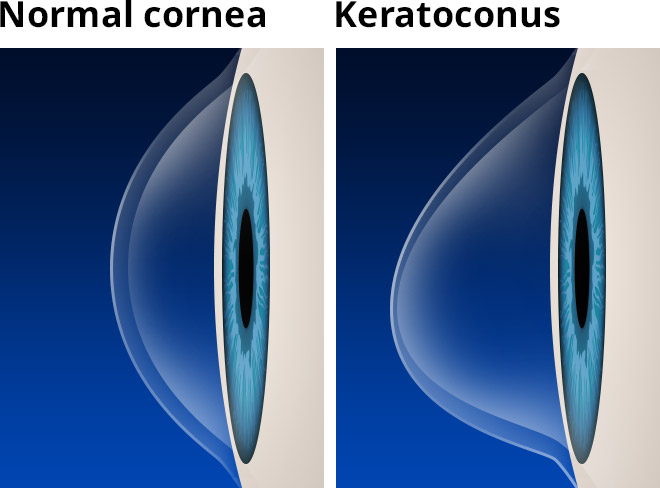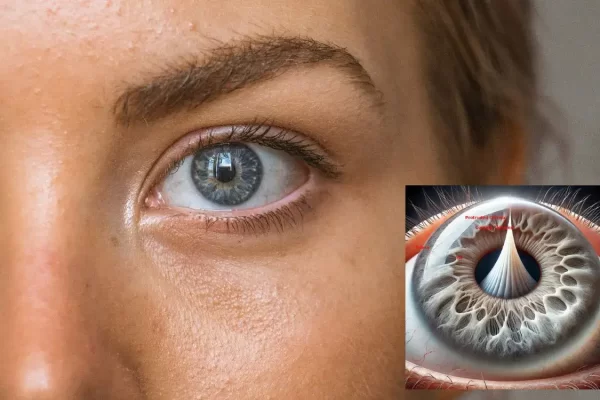Keratoconus Symptoms and Treatment (Placentia, CA)
Keratoconus Symptoms and Treatment
Keratoconus Symptoms: What You Should Know
What comes immediately to mind when we hear the word Keratoconus? If you already have Keratoconus symptoms, you may be aware of symptoms such as impaired vision, nearsightedness, astigmatism, or light sensitivity. The problem is that these are typically widespread symptoms that can be mistaken for other illnesses that are making Keratoconus patients difficult to diagnose. So, what should you ask your doctor, and does your current doctor know Keratoconus treatment very well?
Patients with diabetes also have eye diseases and sensitivity to light. Diabetic patients are also prone to cataracts and astigmatism. Researchers have recently discovered that persons with diabetes have a lower risk of developing Keratoconus. Why? Patients with Type 2 Diabetes have been discovered to have tougher corneas, which has the exact opposite impact as Keratoconus.


Few Diabetics, however, get tested for Keratoconus because the symptoms they are experiencing are also signs of sugar damage to the eye. Dry eyes can also cause blurred vision and pain in the eyes. Patients who read or write excessively blink less, leading the eye to dry out even more, according to doctors. While dry eye can be effectively treated and is not life-threatening, it can destroy the cornea, resulting in double vision, distorted images, and a great deal of discomfort. Keratoconus surgery, corneal transplant surgery, and refractive surgery can help your eyes recover from the discomfort you are feeling right now.
A diagnosis of Keratoconus can be a terrible discovery for anyone. Knowing your alternatives can help you get back on your feet after hearing the news. Individuals that were diagnosed with Keratoconus vision in the past did not have much hope for their eyesight, and it was believed that their vision would deteriorate over time. However, new technologies have given patients diagnosed with Keratoconus new hope, and some are successfully restoring sight that they had lost. They have discovered that Keratoconus contact lenses give you good vision.
The Symptoms of Progressive Keratoconus
Keratoconus Signs and Symptoms
Keratoconus generally develops gradually over time, usually after the mid-20s. Because of its gradual rate of progression, this eye illness is difficult to diagnose. The shape of the eye deviates from its natural round form in this disease, resulting in a gradual loss of near-field vision as well as abnormal astigmatism. Although nearsightedness and distorted vision are the most typical symptoms, light sensitivity can occur in many situations.
If you already wear glasses, you may notice that your eye power fluctuates a lot, increasing or reducing with each visit to the optometrist for a routine eye exam such as visual acuity that distinguishes the forms and details of what you see. However, these changes are usually mild, and an untrained ophthalmologist may not be able to notice early Keratoconus signs.
Keratoconus can be caused by a variety of factors
This eye illness was formerly assumed to be caused by trauma or other external sources. However, subsequent research has revealed that an imbalance of enzymes within the cornea is one of the major causes of Keratoconus. The cornea may be harmed by free radicals, a chemical found in the air, as a result of this imbalance. The cornea can get deformed and swell out as a product of this damage, resulting in a conical shape.
The majority of cases of this eye condition are inherited. If some of your family or distant relatives are people with Keratoconus, you’re likely to get it as well. Long-term exposure to the sun, constant rubbing of the eyes due to chronic eye discomfort, or improperly fitted contact lenses are some of the less obvious causes.
Keratoconus Treatment
It is a tough condition to treat Keratoconus, especially in its later stages. It can be healed in its early stages by using lenses for Keratoconus that are hybrid lenses, it is better than using soft contact lenses. However, at more advanced stages, such procedures are ineffective and a patient could be needed to wear rigid gas permeable lenses (RGP lenses). Fitting these lenses can be extremely tough and cause a significant deal of discomfort to the eyes.
Often, eye care professionals may “piggyback” an RGP lens over a soft contact lens placed over the eye to avoid this problem. The RGP lens covers the cornea and smooths it out, eliminating any difficulties caused by the bulge.
Planning to get your Keratoconus and dry eyes treated?
Come and visit our website to book an appointment
Contact Us Today!: (714) 996-1136
DeCarlo Optometry provides the following services:





